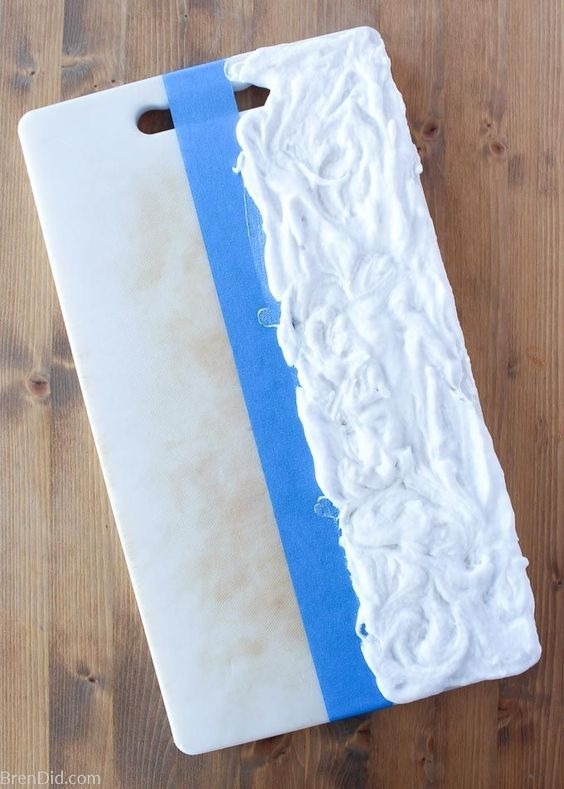Hydrogen peroxide is an efficient bleaching chemical that eliminates microorganisms, illuminates surfaces, and removes stains from surfaces like carpets and furniture.
Any oily residue that may have been left on the cutting board may be removed with dish soap.
Baking soda is a natural abrasive that facilitates the removal of stains caused by food from surfaces. In addition to that, I use it to clean my oven!
Because of the thick combination, the cleaning agents are able to remain in place on the cutting board for a sufficient amount of time to remove the stains from the cutting board.
WHAT ARE THE REASONS WHY YOU SHOULD NOT USE BLEACH TO CLEAN PLASTIC cutting boards?
When it comes to cleaning plastic cutting boards, bleach is often used. Bleach is the agent of choice since it is effective at eliminating stains and eliminates germs well.
Regrettably, cleaning with bleach may be harmful to your health and can cause surfaces to experience corrosion.
Inhaling bleach, which is a solution of sodium hypochlorite, presents a number of health risks, including irritation to the skin and eyes, as well as toxicity when consumed.
A pH of around 12 indicates that bleach is a strong base. When bleach comes into contact with materials, particularly plastic, it causes corrosion due to the high pH of the bleach.
When it comes to eliminating stains from cutting boards with bleach, the majority of guides utilize undiluted bleach. This advise goes against the instructions made by the manufacturers (Clorox suggests using just one tablespoon of bleach combined with one gallon of water on surfaces that are used for food preparation).
Thank goodness, hydrogen peroxide may be used to safely and effectively remove stains from plastic cutting boards without causing any harm.
It is common practice to refer to hydrogen peroxide as “oxygen bleach.” In addition to being an excellent stain remover, it also brightens surfaces and eliminates microorganisms.
Hydrogen peroxide, in contrast to chlorine bleach, does not cause surface corrosion and is not detrimental to the environment.
Hydrogen peroxide, after it has been used, transforms into oxygen and water via a natural process.
Prior to Once the stains on the plastic cutting board have been removed!
A GUIDE TO SANITIZING BOARDS USED FOR CUTTING PLASTIC INDIVIDUALLY:
Cutting boards made of plastic are composed of a material that is non-porous, which makes them safer to use while preparing certain foods. With that being said, there are some circumstances in which you could find it necessary to disinfect your plastic cutting board (for example, after you have sliced up meat).
In order to organically disinfect a plastic cutting board, you may use any one of the following methods:
Continue Reading in next page

